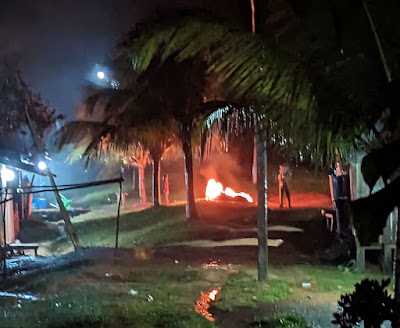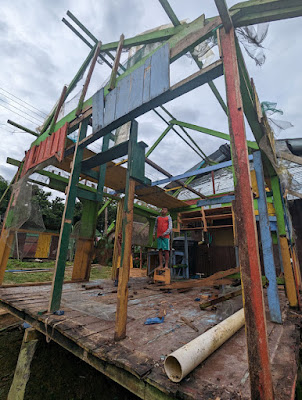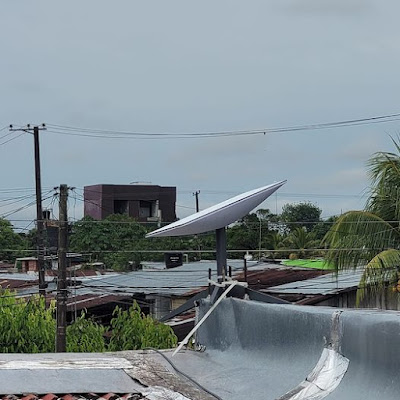Photos from around the village of La Libertad, Leticia, and the river.
After our more intense blog posts about the project, we decided to have pictures of things we see in our daily life around the Amazon.
 |
| Cookies! |
At the end of school shopping, we stopped by a bakery. The kids said they had never had cookies with animal faces, so we got some!
 |
| A doll representing the year 2022. |
A New Year's custom in Colombia; burning man. To welcome the new year, Colombians place a doll outside their house. They do this about a week before December 31. When the new year arrives at midnight, they burn the doll!
 |
| Another doll of 2022. |
 |
| Burning Man, Colombian style! |
 |
| Protected from the rays of the sun. |
Protective covers cover all of the gasoline tanks used for our boat. This keeps them from being exposed to direct sunlight. Our old tank did not have a cover. After four years, it became very brittle. One day when we were filling it up at the gasoline barge in front of Leticia, we hit it against the side of the barge, and it cracked! Luckily, this happened towards the top, and we were able to stop the gasoline escape. After this, we got a new tank and made covers for them all.
 |
| The temporary bridge to the river in Puerta Alegria. |
We spend at least five hours, and often much more time, on the river each week. It is constantly changing in water level, water currents, sandbar dangers, and how people access the river. Many communities construct temporary bridges, stairs, and docks to allow easier access to the water. This bridge was only on the river for a month this year.
 |
| Our old guesthouse. |
In March, we said goodbye to our first guesthouse in the village. We built it 10 years ago. It housed many volunteers, tourists, and members of Gustavo's family. After many repairs, the rot in the wood was too extensive to be repaired. We hope to build a combined tool storage and technology area in its place. We plan to construct the new building from concrete and blocks.
 |
| A "new to her" bike. |
 |
| Haircuts before going to town for school shopping. |
 |
| Watching an action movie in the afternoon. |
The scholarship kids are watching a movie on a donated computer. We power the computer with our solar panels during the early and mid-day. It is connected to the village's power grid in the late afternoon and early evening.
Our education program is looking for used PC laptops and Android tablets. (Sorry, no Apple products. Given our limitations, they don't work well in the Amazon.) If anyone has either to donate, please send it to us! All donations are tax-deductible.
Our address is:
Amazon Pueblo
13 Sunset Street
Thomaston, ME 04861
Thank you!





























